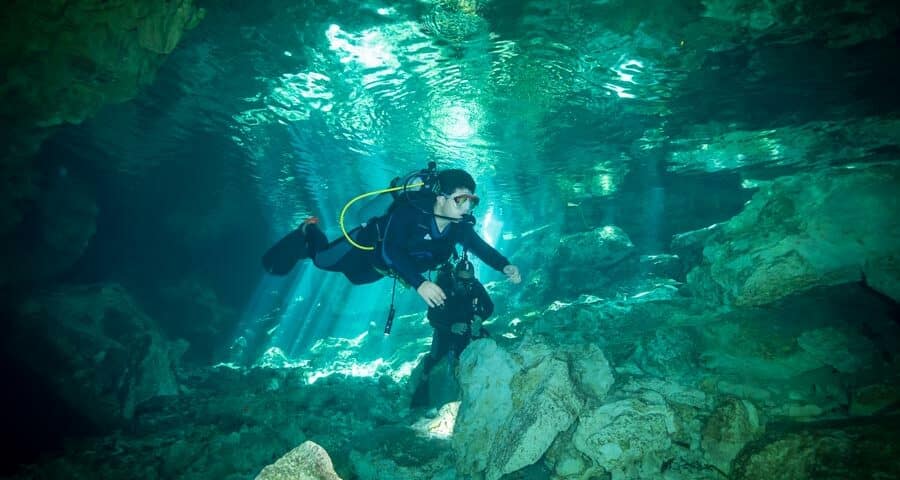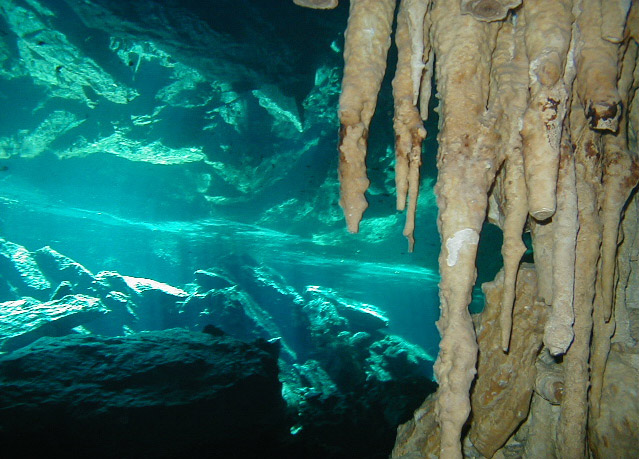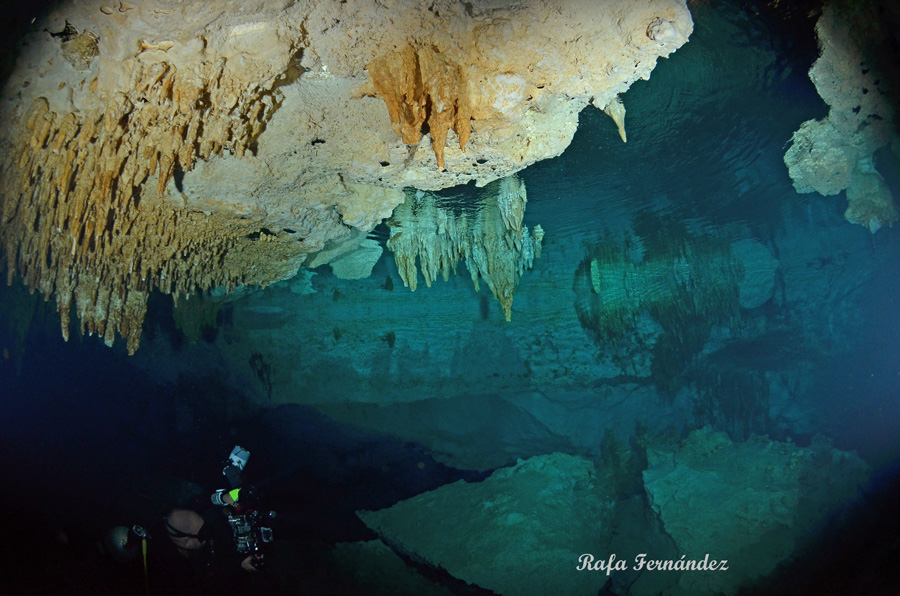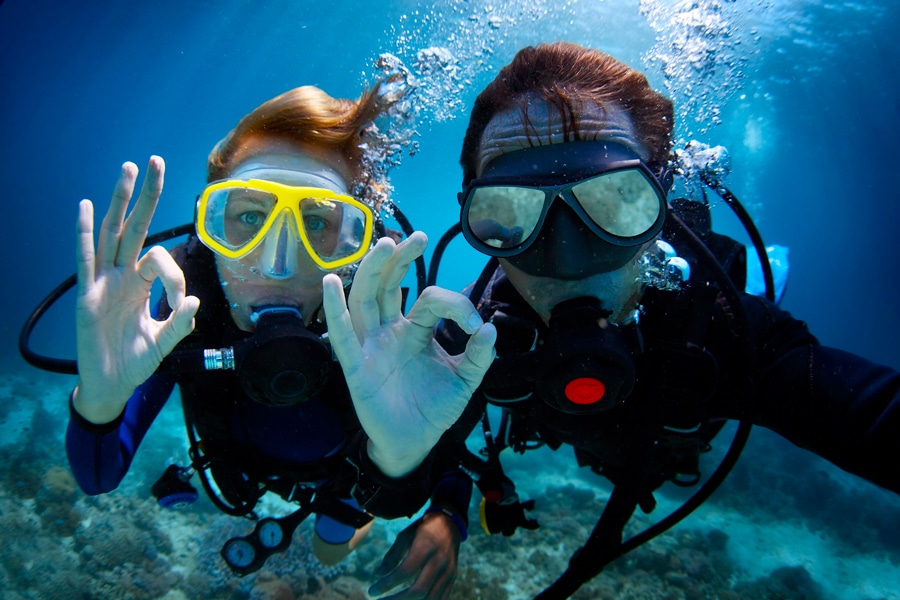We tell you about the differences between a halocline and a thermocline. Many divers have been puzzled when for the first time during a dive they have crossed a layer of water and suddenly see a blur, they blink to clarify their vision and open their eyes again to have the same blurred vision. As we continue to descend, as suddenly as the blurred vision appeared, it disappears, and we again see perfectly. This first experience can be puzzling if we do not know why it is and some divers have thought that they could be experiencing symptoms of narcosis.
It actually is a physical phenomenon called thermocline or halocline consisting of two layers of water with different qualities of temperature or salinity. This means that the layers do not mix due to their different physical properties and when we go through the separation layer, we mix the two types of water, producing light refraction phenomena that give us such a perplexing sensation of blurred vision.








